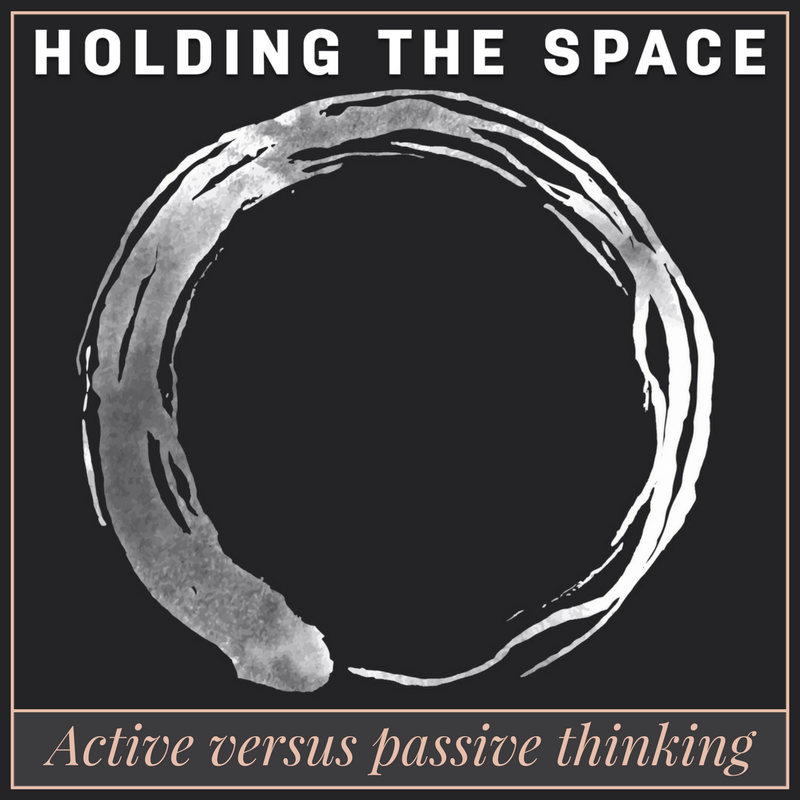
Active versus passive thinking

On the one hand, we can apply our faculty of thought to situations in life.
Deciphering a pattern. Figuring out the kids’ summer camp schedule. Determining the fastest way to stop an overflowing toilet. Considering what brand of toothpaste to buy. Looking for where to get the best value for groceries. Searching for insight into our behaviours. Deciding whether to date that fellow who seemed to be pretty aloof and arrogant, but was who also seemed vulnerable, lovable, tender, cute, and smart.
This kind of thinking is active, engaged, conscious, and focused. The mind is being used as a tool for us to think, to solve problems, to ponder the mysteries of the universe.
On the other hand, much of what goes on in our minds is free-floating rumination, a background noise in our heads.
These kinds of thoughts can take us for a ride on the turbulent waters of regret, fantasy, catastrophizing, and the arising of all kinds of content that has nothing to do with our present experience. This type of thinking hijacks our attention from what is immediately at hand. It collapses the vast possibilities of present moment experience into an inner fantasy world—and usually not a happy fantasy.
We can easily get tangled up in a vortex of thoughts that stick to us, and we pay a dear price for doing so. When we believe the background noise, we become hooked by it emotionally. Often we are unaware that we are getting tangled up in thought until it’s too late. The solution? Awareness.
As we develop our skill of taking notice, discussed in Blog 6, Taking Notice, we can learn to prevent thought from triggering feelings that stick to us.
We learn to open up some space to step back and see them as blips on our screen of awareness rather than something that we “are”—in other words, we become our own witness.
We begin to notice that there are patterns to our thoughts and feelings, there are different inner voices at play, there are inner conflicts taking hold of our thought mechanism. We can grow in discernment to learn to actively and consciously direct our thoughts again. We can retrain ourselves to be active, proactive thinkers.
Once we begin to see with greater clarity, we can see specifically the thoughts that lead us to eat, that lead us to go passive, the thoughts that cause us to check-out or act-out. We can also begin to use the mind with greater power to engage ourselves in life. We use the mind to tune into and align ourselves with what is really happening in front of us, rather than being used by it to tune out from what is really occurring in this very moment.
Through life coaching and awareness skills, we can re-learn how to put ourselves back in the driver’s seat of thinking . . . one thought at a time.
Who would you be without your pattern of binge eating? Please feel free to email me your reflections.
Would you like someone by your side on your path to recovering from binge eating? Book me for a free mini-session, and let’s explore what lies ahead.




Previous Article
Staying the courseNext Article
Taking notice